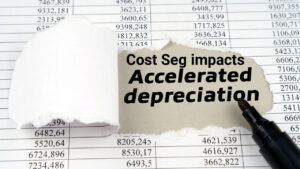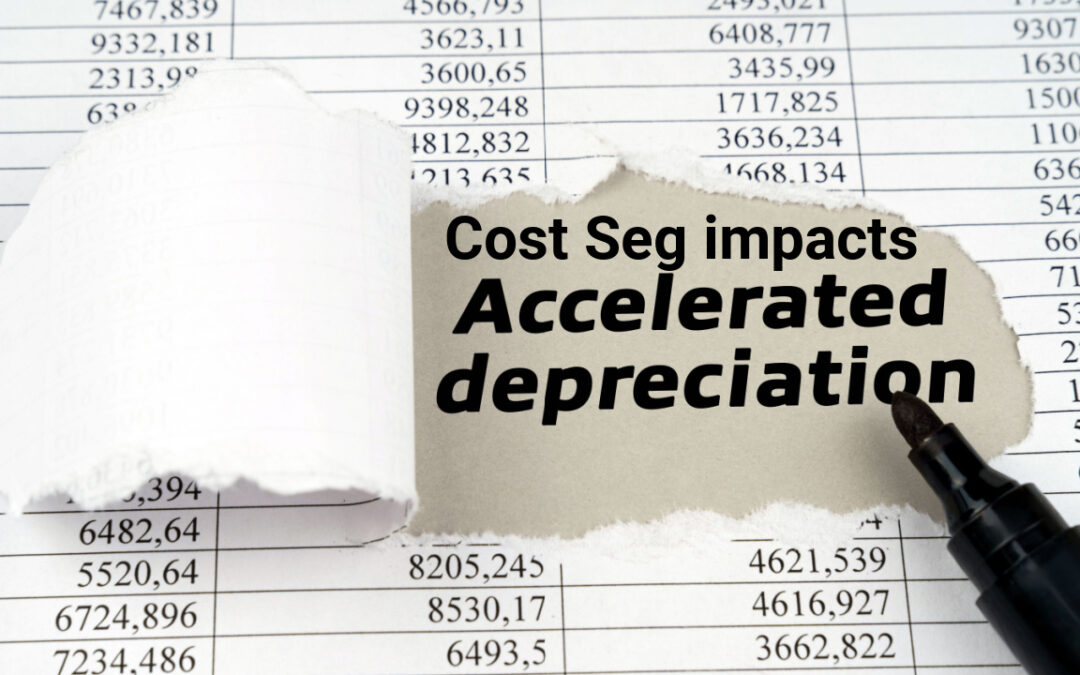Cost Segregation Strategies for Income Tax Savings in Queens, NY

A depiction of a depreciation schedule with a torn section revealing the impact of cost segregation, showcasing accelerated depreciation benefits.
Introduction
In the realm of real estate investing, where every dollar counts, savvy investors are continually seeking ways to minimize tax liabilities while maximizing cash flow. One potent tool in their arsenal? Cost segregation. Consequently, let’s explore how cost segregation can unlock substantial tax savings and enhance cash flow for property investors.
Understanding Cost Segregation
Cost segregation is a tax planning strategy that involves identifying personal property assets within a real estate investment to accelerate depreciation deductions. Therefore, by categorizing assets appropriately, investors can take depreciation sooner and reap significant tax benefits early in the investment’s life cycle.
Significance for Investors
For real estate investors, especially those with significant property holdings, cost segregation can be a game-changer. In addition, it offers the opportunity to reduce taxable income, lower property taxes, and ultimately boost cash flow, all of which contribute to a healthier bottom line and improved return on investment.
Cost Segregation Process
Executing a successful cost segregation study requires the expertise of qualified professionals. Notwithstanding, these experts meticulously analyze the components of a property to classify assets correctly, ensuring compliance with tax regulations and maximizing available deductions.
Benefits of Cost Segregation
The benefits of cost segregation extend far beyond mere tax savings. Moreover, by optimizing depreciation deductions, investors can free up cash flow that can be reinvested into their properties or used for other investment opportunities. Additionally, accelerated depreciation can enhance returns and improve the property’s financial performance.
Tax Implications and Savings
One of the primary advantages of cost segregation is its ability to reduce taxable income by maximizing depreciation deductions. Consequently, this not only leads to immediate tax savings, but also to long-term benefits, as investors retain more of their earnings, allowing further investment or expansion of their portfolios.
Applying Cost Segregation to Different Property Types
Cost segregation is a versatile strategy that can be applied to various types of real estate investments, including commercial buildings, multifamily residences, and industrial properties. Moreover, regardless of the property type, investors will benefit from the tax advantages offered by cost segregation.
Even for novice investors, cost segregation offers an opportunity to optimize tax outcomes and improve financial performance. Therefore, by incorporating cost segregation into their investment strategy, new investors can set themselves up for long-term success in the real estate market.
Property taxes can be a significant expense for real estate investors. Accordingly, by leveraging cost segregation to reduce property taxes, investors can enhance cash flow and improve the profitability of their investments, providing greater stability and resilience in challenging market conditions.
Examining real-world case studies can provide valuable insights into the effectiveness of cost segregation in practice. Indeed, from small-scale properties to large commercial developments, these examples demonstrate the tangible benefits that cost segregation can deliver for investors of all sizes.
Meet John and Emily Smith, seasoned real estate investors who own a small apartment building in a thriving urban area. With 12 units and a property value of $1.2 million, they were looking for ways to maximize their returns and minimize their tax liability.
Consequently, after consulting with a tax professional, the Smiths decided to conduct a cost segregation study on their property. Moreover, this comprehensive analysis identified $350,000 in personal property assets eligible for accelerated depreciation. These assets included electrical and plumbing systems, flooring and finishes, appliances and fixtures, and landscaping and site improvements.
By applying cost segregation, the Smiths were able to claim an additional $105,000 in depreciation over the first five years, resulting in a tax savings of $35,000 per year. Moreover, this significant reduction in their tax liability allowed them to increase their cash flow, which they used to upgrade the property and attract higher-paying tenants.
– Tax savings: $35,000 per year
– Increased cash flow: $21,000 per year
– Total savings over five years: $175,000
The cost segregation was a game changer for their investment. John & Emily were able to unlock significant tax savings and increase their cash flow, which has allowed them to grow our portfolio and achieve our financial goals.
In fact, by applying cost segregation, the Smiths were able to optimize their tax strategy and improve their bottom line. Moreover, this case study demonstrates the tangible benefits of cost segregation for real estate investors of all sizes.
To maximize the benefits of cost segregation, investors should integrate it into their broader tax planning and investment strategies. Moreover, by aligning cost segregation with their financial goals, investors can ensure sustainable tax savings and long-term financial success.
While cost segregation studies can offer significant tax benefits, there are also potential downsides to consider:
– Cost: Conducting a cost segregation study can be expensive, with prices ranging from $5,000 to $50,000 or more.
– Complexity: Cost segregation studies require specialized expertise, and the process can be complex and time-consuming.
– Audit Risk: The IRS may scrutinize cost segregation studies more closely, due to the potential for abuse or misinterpretation.
– Over-segregation: Inadequate or inaccurate studies may lead to over-segregation, resulting in excessive depreciation claims and potential penalties.
Cost segregation is a powerful tool that real estate investors can use to minimize tax liabilities and maximize cash flow. Indeed, by understanding the process, including the potential downsides, investors can make informed decisions and avoid common pitfalls. Moreover, by leveraging expert guidance and strategically implementing cost segregation strategies, investors can unlock significant tax savings and enhance the profitability of their property investments.
Furthermore, effective cost segregation enables investors to optimize their tax strategy, reduce their tax burden, and improve their financial performance. Moreover, by integrating cost segregation into their overall investment plan, investors can achieve long-term financial success and reach their goals more efficiently. In conclusion, cost segregation is a valuable resource for real estate investors seeking to maximize their returns and minimize their tax liability.
Are you a real estate professional and need help with your tax/retirement planning or accounting? I am here for you! Please contact Wayne Scully (https://wscullycpa.com/about/) by e-mail at [email protected] or by phone at 718.938.4601.
Get a FREE! FREE! copy of Wayne’s book here: www.getmytaxbook.com
Cost Segregation Strategies for Property Tax Savings, which are one of the more powerful tools in your tax planning. Wanna get more of my content? Then check out my Real Estate playlist: https://youtube.com/playlist?list=PLaauMNiboYq0VM7kdkx5EqUSPAJ1eLCcp&si=6BuDhWqawCJXhh1n
Note: This post may contain parts generated with the assistance of artificial intelligence. Thank you for reading!

